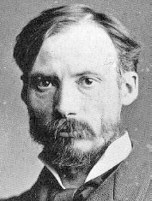
|
Renoir was born in Limoges on February 25, 1841. As a child he worked in a porcelain factory in Paris, painting designs on china; at 17 he copied paintings on fans, lamp shades, and blinds. He studied painting formally in 1862-63 at the academy of the Swiss painter Charles Gabriel Gleyre in Paris. Renoir's early work was influenced by two French artists, Claude Monet in his treatment of light and the romantic painter Eugène Delacroix in his treatment of color.
Renoir first exhibited his paintings in Paris in 1864, but he did not gain recognition until 1874, at the first exhibition of painters of the new impressionist school. One of the most famous of all impressionist works is Renoir's Le Bal au Moulin de la Galette (1876, Musée du Louvre, Paris), an open-air scene of a café, in which his mastery in figure painting and in representing light is evident. Outstanding examples of his talents as a portraitist are Madame Charpentier and Her Children (1878, The Metropolitan Museum of Art, New York City) and Jeanne Samary.
Renoir fully established his reputation with a solo exhibition held at the Durand-Ruel Gallery in Paris in 1883. In 1887 he completed a series of studies of a group of nude female figures known as The Bathers (Philadelphia Museum of Art). These reveal his extraordinary ability to depict the lustrous, pearly color and texture of skin and to impart lyrical feeling and plasticity to a subject; they are unsurpassed in the history of modern painting in their representation of feminine grace. Many of his later paintings also treat the same theme in an increasingly bold rhythmic style. During the last 20 years of his life Renoir was crippled by arthritis; unable to move his hands freely, he continued to paint, however, by using a brush strapped to his arm. Renoir died at Cagnes, a village in the south of France, on December 3, 1919.
Other notable paintings by Renoir include La Loge (1874, Courtauld Institute Galleries, London); Woman with Fan (1875) and The Swing (1875), both in the Louvre, Paris; The Luncheon of the Boating Party (1881, Phillips Collection, Washington, D.C.); and Vase of Chrysanthemums (1895, Musée de Beaux-Arts, Rouen)—one of the many still lifes of flowers and fruit he painted throughout his life.
|

